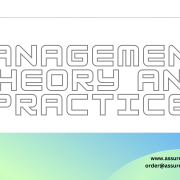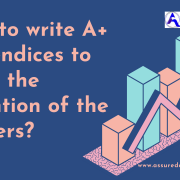Recently, the organization and administration of education have been influenced and challenged by the involvement of technology. Technology contributes more in enhancing educational quality hence creating efficiency in the education sector. The quality of education is greatly influenced by Information and Communication Technology (ICT) systems. The use of technology in teaching and learning enhances knowledge development among learners and should be integrated into all academic activities. Learners should be able to easily access a modern learning environment, facilitating collaborative and individual learning. Also, teachers can develop their teaching skills by accessing support services that are made available by technology.
Technology helps in expanding access to education. Philomina and Amutha (2016) mentioned that schools provide a conducive environment where students can easily participate in many computer activities. The home acts as a contemporary site where students can only access a limited set of computer activities. Several other studies clearly show that the use of technology in teaching and learning helps to enhance educational quality and links learning to real-life situations. Majumdar (2015) argued that learning is a continuous activity where students seek knowledge to change their expectations. Technology enables both students and instructors to access digital sources of knowledge. This essay aims to discuss the benefits and challenges of the introduction of technology in teaching and learning.
Advantages of the introduction of technology in teaching and learning
The introduction of computers and smartphones has boosted the process of learning. Currently, such technological devices are being used in classrooms since they make teaching and learning easier. The use of technology has been found to facilitate the following:
Development of a creative learning environment
Technology assists learners in developing new understanding in their friend of study. Technology provides a platform where learners can access creative solutions to different academic questions. For instance, learners can access e-books to assist them in their reading classes. Also, learners can use computers, Ipads, and laptops to access all types of texts at any academic level. The study conducted by Davies (2016) found that learner’s creativity can be boosted through access to certain technologies. Access to a range of technical material such as interactive whiteboard can help the visual learner gain creating skills. In my own experience, learners’ interaction with the interactive whiteboard allows them to explore and imagine effectively, hence enhancing creativity in classrooms.
Technology improve learning and teaching quality
Thomas (2010) stated that technology could develop good quality teaching and learning through certain important characteristics. These characteristics include autonomy, capability, autonomy, and creativity. Under autonomy, technology enables learners to regulate their learning activities. Learners can effectively work by themselves and can easily associate with others. Instructors can provide tasks to their learners and authorize learners to complete their tasks, either individually or in groups. Technology enables learners to build new knowledge that enables them to gain confidence in taking risks. Seifert (2016) argued that technology fosters autonomy by allowing instructors to develop their own teaching materials; hence they gain more control over the usual course content.
Under capability, after learners gain confidence in the learning process, then they can gain the capability to effectively and efficiently try out new ideas through technology. For instance, learners can use the online dictionary to practice pronunciation in their ESL listening and speaking class. Technology enables such learners to browse the best online dictionary that effectively serves their purpose. Hence, this learning process helps develop learning skills, which helps learners broaden theirs in broadening. Technology enables the optimization of creativity. Mbodila (2013) argued that learners can discover new multimedia tools through the use of technology. Therefore, I believe that technology can enhance teaching quality and learn through the learning of learners’ autonomy, capability, and creativity.
Technology support teaching through aiding access to course content
Pheeraphan (2013) mentioned that instructors can aid in the integration of technology in education. Instructors can easily develop ICT classes through educational institutes, which can provide the necessary equipment and technological support. The major responsibilities of the instructors will be altering the course format and creating and explaining course tasks. Also, the instructors can effectively arrange the computer lab through the help of their technology-learning assistants. Additionally, Fu (2013) indicated that technology enables learners to research beyond the course content; hence they can efficiently understand the required concepts. ICT has the capability to alter the teaching and learning relationship. Fu’s study found that the involvement of technology in teaching and learning can reverse teachers’ and learners’ relationships. The relationship helps students to develop confidence in assisting their teachers in tackling complex topics in classrooms. Therefore, ICT helps ensure that teachers are more creative when creating their course material since it has changed the traditional teacher-centered approach while teaching.
Technology promotes distance-learning
Supon and Ruffini (2009) argued that ICT provides a platform where learners can effectively communicate, share, and work collaboratively with other learners from the same or different geographical area. For instance, learners around the world can gather in a teleconferencing classroom to hold a certain discussion. Such a classroom enables learners to discuss and share ideas regarding certain problems to develop some concepts. Such platforms enable learners to acquire knowledge together and provide learners with the opportunity to acquire diverse learning experiences from different participants. Therefore, learners can use teleconferencing classrooms to express themselves and to have a deeper understanding of their learning.
Disadvantages of involvement of technology in teaching and learning
Nevertheless, some works of literature have identified some disadvantages in the involvement of technology in teaching and learning. These disadvantages can be grouped into two categories based on the learners’ perspective and teachers’ perspective.
Disadvantages based on learner perspective
In the classroom, there exist some problems which are caused by the use of technology. Salehi (2012) argued that technology’s main challenges are its effect on student mobility and increased anxiety as a result of standardized tests. These problems can be resolved by introducing problem-based learning activities and sufficient support during the learning process. Sánchez and Alemán (2011) found more disadvantages, including a reduction in the number of instructors and delay in providing feedback from teachers and reducing learners’ interaction with their teachers and peers. The author proposes that more orientation and increased learners’ training can help eradicate these problems. From my perspective, curriculum development should be conducted to lower such problems to improve the efficiency of using technology in classrooms. Learners should ensure that they acquire the necessary technical skills to assist their learning through digital technology.
Disadvantages based on teachers’ perspective
The use of technology when should be more than just supporting the traditional teaching methods. Tezci (2011a) argued that teachers have to learn how technology can help them increase their productivity and integrate it with classroom activities for better student learning. Teachers should ensure that they develop creative and productive lessons to enhance effective learning. However, Buabeng-Andoh (2012) found that teachers usually use technology to prepare tests and handouts and not enhance critical thinking among students. Similarly, Ahuja (2016) found that teachers support their existing teaching methods through technology rather than using it to foster student-centered learning. Teachers lack models to assists them in using the existing technology to enhancing effective learning. Teachers are also limited by factors such as learners’ ability and class size when facilitating digital learning. These problems can be solved by educating teachers on different ways to integrate technology in learning that abides with their pedagogical goals and needs.
Factors influencing the involvement of technology in teaching and learning
Factors influencing the involvement of technology in teaching and learning can either be external or internal factors. The external factors that influence technology use in classrooms include the availability of technology, the ease of accessing technological resources, school curriculum, and technical and administrative support. Lin et al. (2012) stated that the most common external factors are limited access to computers, lack of sufficient time for planning the course, and lack of technical and administrative support. Availability of technology and sufficient technical and administrative support translates to effective technology integration in the education sector.
Additionally, certain internal factors influence the integration of technology in the education sector. These factors include understating the importance of technology in learning and technological skills. Lin et al. (2012) found that the major internal factors that affect technological integration are a misinterpretation of the technology by teachers and teachers’ pressure to cover all course content hence leaving less time for learners to use the available technology. Therefore, it seems teachers can be discouraged from integrating technology when teaching their course work if the school culture emphasizes more competition. Hence, the belief that teachers affect the involvement of technology in the classroom.
The influence of teacher attitude and perception in the integration of technology
The essay reveals that the internal variables greatly influence technological integration in the classroom conducted by teachers. A study conducted by Salehi (2012) revealed that teachers tend to believe in student-centered learning if they frequently integrate technology in the classroom. The teachers’ attitude towards technology determines the technology used by learners and teachers. The study’s findings revealed that the integration of technology in any classroom is linked to teachers’ attitudes towards the use of such technology. Similarly, Fu (2013) argued that teachers who possess constructivist beliefs tend to support integrating technology in the classroom. In my view, teachers’ attitude towards the involvement of technology in teaching and learning is the greatest predictor of technological integration in different learning institutions.
Internal variables may be altered by instructors’ participation in courses or programs involving technological preparation. A study counted by Galton (2010) found that teachers’ perceptions can change when they get involved in technology preparation programs. Before being involved in the preparation programs, teachers had some doubts concerning integrating technology in the classroom before incorporating the use of such technology in their teaching practices. After undertaking the programs, teachers’ perspectives had changed such that they developed a positive attitude towards the integration of technology in the classroom. The courses helped teachers to develop a better understanding of the involvement of technology in teaching and learning. Such courses and programs enable teachers to recognize the importance of technology in learning. Therefore, it seems that the education sector should increase awareness of the importance of incorporating technology into student-centered learning.
Conclusion
The critical analysis sort of investigates the involvement of technology in teaching and learning. Technology has greater benefits in the growth and production of quality education. The introduction of computers and laptops in the classroom has boosted the learning process. The advantages of integrating technology in teaching and learning include developing a creative learning environment, enhancing the quality of teaching and learning, supporting teaching through aiding access to course content, and promoting a collaborative distance-learning environment.
On the other hand, technology has some disadvantages. For instance, technology affects student mobility and can lead to increased anxiety due to standardized tests. Teachers usually use technology to prepare tests and handouts and not enhance critical thinking among students. The level of technological integration in learning depends on both internal and external factors. The study found that teacher’s attitude towards the involvement of technology in teaching and learning is the greatest predictor of technological integration in a different learning institution.
Recommendations
- Technology should be integrated into education as it helps in enhancing the teaching and learning processes in classrooms.
- Technology should be involved in teaching and learning since it helps in establishing student-centered learning in classrooms.
Future researchers can undertake studies on the influence of organizational culture on instructors’ attitudes towards integrating technology in teaching and learning.
References
Ahuja, A. (2016). Integration of information and communication technology in school curriculum. Learning Community-An International Journal of Educational and Social Development, 7(1), 1-8.
Buabeng-Andoh, C. (2012). Factors influencing teachersâ adoption and integration of information and communication technology into teaching: A review of the literature. International Journal of Education and Development using ICT, 8(1).
Davies, D., & McGregor, D. (2016). Teaching science creatively. Routledge.
Fu, J. (2013). Complexity of ICT in education: A critical literature review and its implications. International Journal of education and Development using ICT, 9(1), 112-125.
Galton, M. (2010). Going with the flow or back to normal? The impact of creative practitioners in schools and classrooms. Research Papers in Education, 25(4), 355-375.
Lin, M.-C., Wang, P.-Y. and Lin, I.-C., 2012. Pedagogy technology: A two-dimensional model for teachers’ ICT integration, British Journal of Educational Technology, vol. 43, pp.97-108.
Majumdar, S. (2015). Emerging trends in ICT for education & training. Gen. Asia Pacific Reg. IVETA.
Mbodila¹, M., Jones, T., & Muhandji, K. (2013). Integration of ICT in education: Key challenges.
Pheeraphan, N. (2013). Enhancement of the 21st century skills for Thai higher education by integration of ICT in classroom. Procedia-Social and Behavioral Sciences, 103(2013), 365-373.
Philomina, M. J., & Amutha, S. (2016). Information and communication technology awareness among teacher educators. International Journal of Information and Education Technology, 6(8), 603.
Salehi, H., & Salehi, Z. (2012). Integration of ICT in language teaching: Challenges and barriers. In 3rd International Conference on e-Education, e-Business, e-Management and e-Learning IPEDR (Vol. 27).
Sánchez, J. J. C., & Alemán, E. C. (2011). Teachers’ opinion survey on the use of ICT tools to support attendance-based teaching. Computers & Education, 56(3), 911-915.
Seifert, T. (2016). Involvement, collaboration and engagement: Social networks through a pedagogical lens. Journal of Learning Design, 9(2), 31-45.
Thomson, P., & Sanders, E. (2010). Creativity and whole school change: An investigation of English headteacher practices. Journal of Educational Change, 11(1), 63-83.










